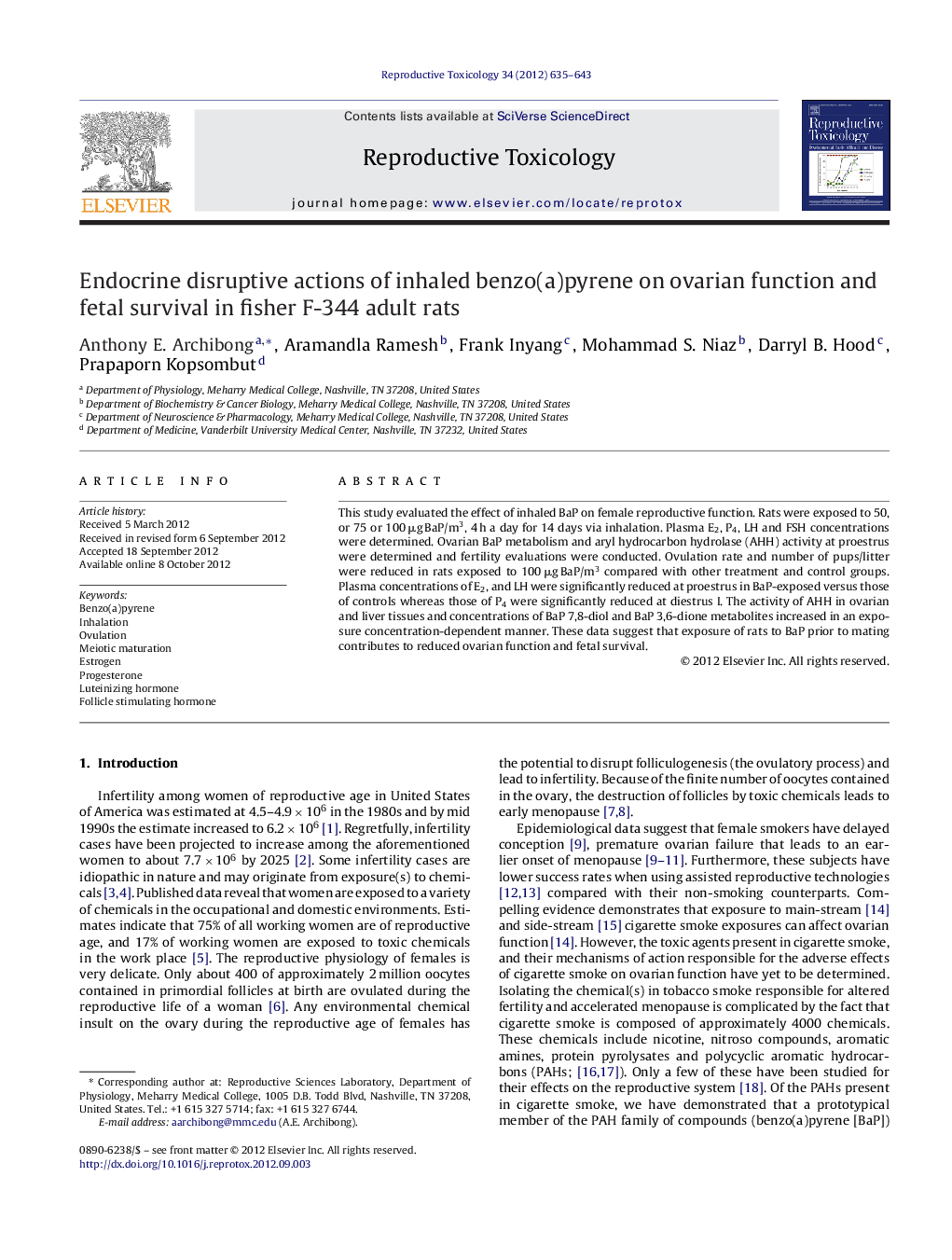| Article ID | Journal | Published Year | Pages | File Type |
|---|---|---|---|---|
| 2593879 | Reproductive Toxicology | 2012 | 9 Pages |
This study evaluated the effect of inhaled BaP on female reproductive function. Rats were exposed to 50, or 75 or 100 μg BaP/m3, 4 h a day for 14 days via inhalation. Plasma E2, P4, LH and FSH concentrations were determined. Ovarian BaP metabolism and aryl hydrocarbon hydrolase (AHH) activity at proestrus were determined and fertility evaluations were conducted. Ovulation rate and number of pups/litter were reduced in rats exposed to 100 μg BaP/m3 compared with other treatment and control groups. Plasma concentrations of E2, and LH were significantly reduced at proestrus in BaP-exposed versus those of controls whereas those of P4 were significantly reduced at diestrus I. The activity of AHH in ovarian and liver tissues and concentrations of BaP 7,8-diol and BaP 3,6-dione metabolites increased in an exposure concentration-dependent manner. These data suggest that exposure of rats to BaP prior to mating contributes to reduced ovarian function and fetal survival.
► Exposure of women via inhalation to PAHs including BaP predisposes them to poor fertility and pregnancy outcomes. ► A significant decline in fertility indices in adult female rats subjected to sub-acute inhaled BaP was observed. ► Our findings suggest that exposure of rats to BaP prior to mating contributes to reduced ovarian function and fetal survival.
